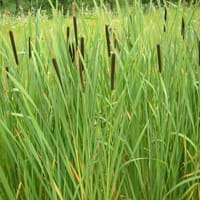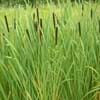Life Span
Perennial
Perennial
Origin
World/Pandemic, North America, Caribbean, Europe, Northern Africa, Asia
Hybrid origin, Mexico, Central America, South America
Types
Not Available
Not Available
Habitat
Boggy areas, Near ponds
Coastal Regions
USDA Hardiness Zone
2-12
11-15
Sunset Zone
21,22
A1, A2, A3, H1, H2, 1a, 1b, 2a, 2b, 3a, 3b, 4, 5, 6, 7, 8, 9, 10, 11, 12, 13, 14, 15, 16, 17, 18, 19, 20, 21, 22, 23, 24
Habit
Clump-Forming
Upright/Erect
Flower Color
Sienna, Chocolate
Yellow
Flower Color Modifier
Not Available
Bicolor
Fruit Color
Not Available
Red
Leaf Color in Spring
Green
Green, Dark Green
Leaf Color in Summer
Green
Green, Dark Green
Leaf Color in Fall
Not Available
Green, Dark Green
Leaf Color in Winter
Green
Green, Dark Green
Leaf Shape
Grass like
Ovate
Plant Season
Summer, Fall
Spring, Summer, Fall
Sunlight
Full Sun, Partial Sun
Full Sun
Type of Soil
Loam, Sand
Loam, Sand
The pH of Soil
Acidic, Neutral, Alkaline
Neutral
Soil Drainage
Poorly Drained
Well drained
Bloom Time
Summer
Indeterminate
Tolerances
Wet Site
Drought
Where to Plant?
Container, Ground
Container, Ground
How to Plant?
Divison, Seedlings
Grafting, Seedlings
Plant Maintenance
Medium
Medium
Watering Requirements
Does not require regular watering, Water Deeply
Needs more water during establishment
In Summer
Lots of watering
Lots of watering
In Spring
Moderate
Moderate
In Winter
Average Water
Average Water
Soil pH
Acidic, Neutral, Alkaline
Neutral
Soil Type
Loam, Sand
Loam, Sand
Soil Drainage Capacity
Poorly Drained
Well drained
Sun Exposure
Full Sun, Partial Sun
Full Sun
Pruning
Cut limbs, Remove damaged leaves, Remove dead branches, Remove dead leaves, Remove dead or diseased plant parts
Pinch or prune as they grow to promote branching and bushiness
Fertilizers
All-Purpose Liquid Fertilizer, Apply 5-10-5 amounts, Apply N-P-K
14-14-14 Fertilizer, Compost
Pests and Diseases
Red blotch
Anthracnose, Aphids, Red blotch, Rust
Plant Tolerance
Wet Site
Heat Tolerance, Salt and Soil Compaction
Flower Petal Number
Not Available
Single
Edible Fruit
Not Available
Yes
Fragrant Bark/Stem
No
Yes
Foliage Texture
Coarse
Medium
Foliage Sheen
Matte
Matte
Attracts
Birds
Aphids, Not Available, Squirrels
Allergy
Skin rash
Stomach pain, Vomiting
Aesthetic Uses
Ground Cover, Showy Purposes
Used in parkland
Beauty Benefits
Not Available
Anti-ageing, Blackheads, Reduce Bruises
Environmental Uses
Air purification, soil stabilisation
Shadow Tree, Soil protection
Medicinal Uses
anticoagulant, Astringent, Burns, Diuretic, Emmenagogue, Galactogogue, Haemostatic, Miscellany, Refrigerant, Sedative, Tonic, Vulnerary
Dehydration, Diabetes, Diarrhea, Nutrients, Weight loss
Part of Plant Used
Flowers, Leaves, Root, Seeds, Stem
Fruits
Other Uses
Fibre, For making oil, used for weaving hats, Used in biomass, Used in paper industry, Weaving into Mats and Bags
Application in Handicrafts, Food for animals, Showy Purposes
Used As Indoor Plant
No
No
Used As Outdoor Plant
Yes
Yes
Garden Design
Dried Flower/Everlasting, Water Gardens, Wildflower
Edible, Herb, Vegetable
Botanical Name
TYPHA latifolia
Manilkara zapota
Common Name
Broadleaf Cattail, Common Cattail
sapodilla , chikoo, Sapota
In Hindi
Broadleaf Cattail
चीकू
In German
Laub- Cattail
Breiapfelbaum
In French
broadleaf Cattail
Sapotillier
In Spanish
Espadaña de hoja ancha
chicle
In Greek
πλατύφυλλων Cattail
sapodilla
In Portuguese
broadleaf Tifa
sapodilla
In Polish
Broadleaf Cattail
Pigwica właściwa, sapodilla
In Latin
broadleaf Cattail
sapodilla
Phylum
Magnoliophyta
Magnoliophyta
Class
Liliopsida
Magnoliopsida
Family
Typhaceae
Sapotaceae
Clade
Angiosperms, Commelinids, Monocots
Angiosperms, Asterids, Eudicots
Tribe
Not Available
Sapoteae
Subfamily
Pitcairnioideae
Sapotoideae
Number of Species
Not Available
Season and Care of Broadleaf Cattail and Sapodilla
Season and care of Broadleaf Cattail and Sapodilla is important to know. While considering everything about Broadleaf Cattail and Sapodilla Care, growing season is an essential factor. Broadleaf Cattail season is Summer and Fall and Sapodilla season is Summer and Fall. The type of soil for Broadleaf Cattail is Loam, Sand and for Sapodilla is Loam, Sand while the PH of soil for Broadleaf Cattail is Acidic, Neutral, Alkaline and for Sapodilla is Neutral.
Broadleaf Cattail and Sapodilla Physical Information
Broadleaf Cattail and Sapodilla physical information is very important for comparison. Broadleaf Cattail height is 182.88 cm and width 91.44 cm whereas Sapodilla height is 150.00 cm and width 60.00 cm. The color specification of Broadleaf Cattail and Sapodilla are as follows:
Broadleaf Cattail flower color: Sienna and Chocolate
Broadleaf Cattail leaf color: Green
Sapodilla flower color: Yellow
- Sapodilla leaf color: Green and Dark Green
Care of Broadleaf Cattail and Sapodilla
Care of Broadleaf Cattail and Sapodilla include pruning, fertilizers, watering etc. Broadleaf Cattail pruning is done Cut limbs, Remove damaged leaves, Remove dead branches, Remove dead leaves and Remove dead or diseased plant parts and Sapodilla pruning is done Pinch or prune as they grow to promote branching and bushiness. In summer Broadleaf Cattail needs Lots of watering and in winter, it needs Average Water. Whereas, in summer Sapodilla needs Lots of watering and in winter, it needs Average Water.





